Man-Made ‘Living Bridges’ Are Grown to Stand for Centuries—Without Nuts or Bolts: VIDEO
Bridges sculpted by Indian tribes using a simple technique
The beautiful phenomenon of “living root” bridges, expertly sculpted by Indian tribes, is a testament to what can be achieved when man and nature work together. These incredible structures have stood the test of time owing to a simple and effective, centuries-old technique.
Living root bridges are commonly found in southern Meghalaya state in northern India. A type of suspension bridge, known locally as “jing kieng jri,” they are handmade from the interwoven aerial roots of the huge rubber fig tree species, Ficus elastica, by the Khasi and Jaintia mountain tribes of the southernmost Shillong Plateau.
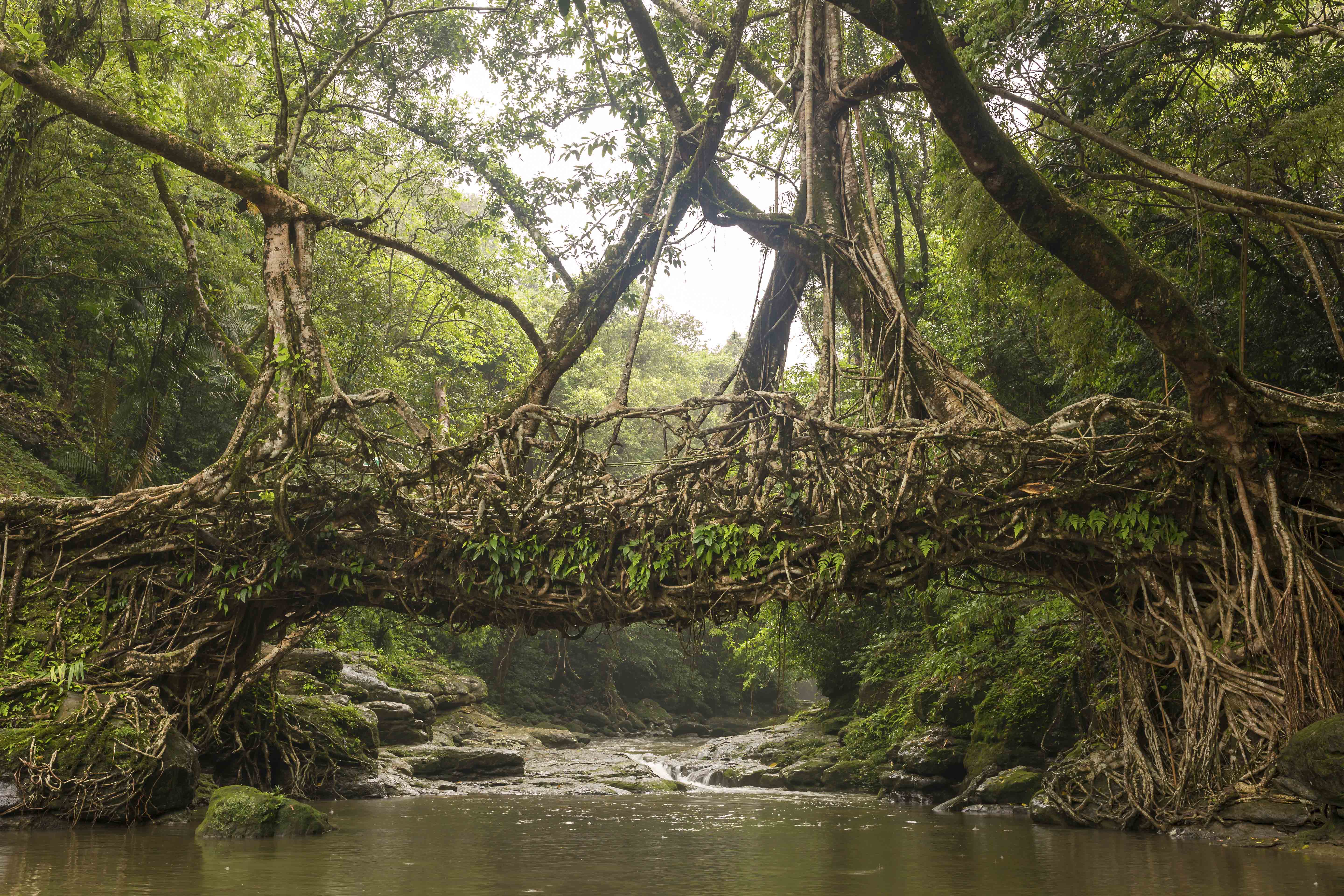
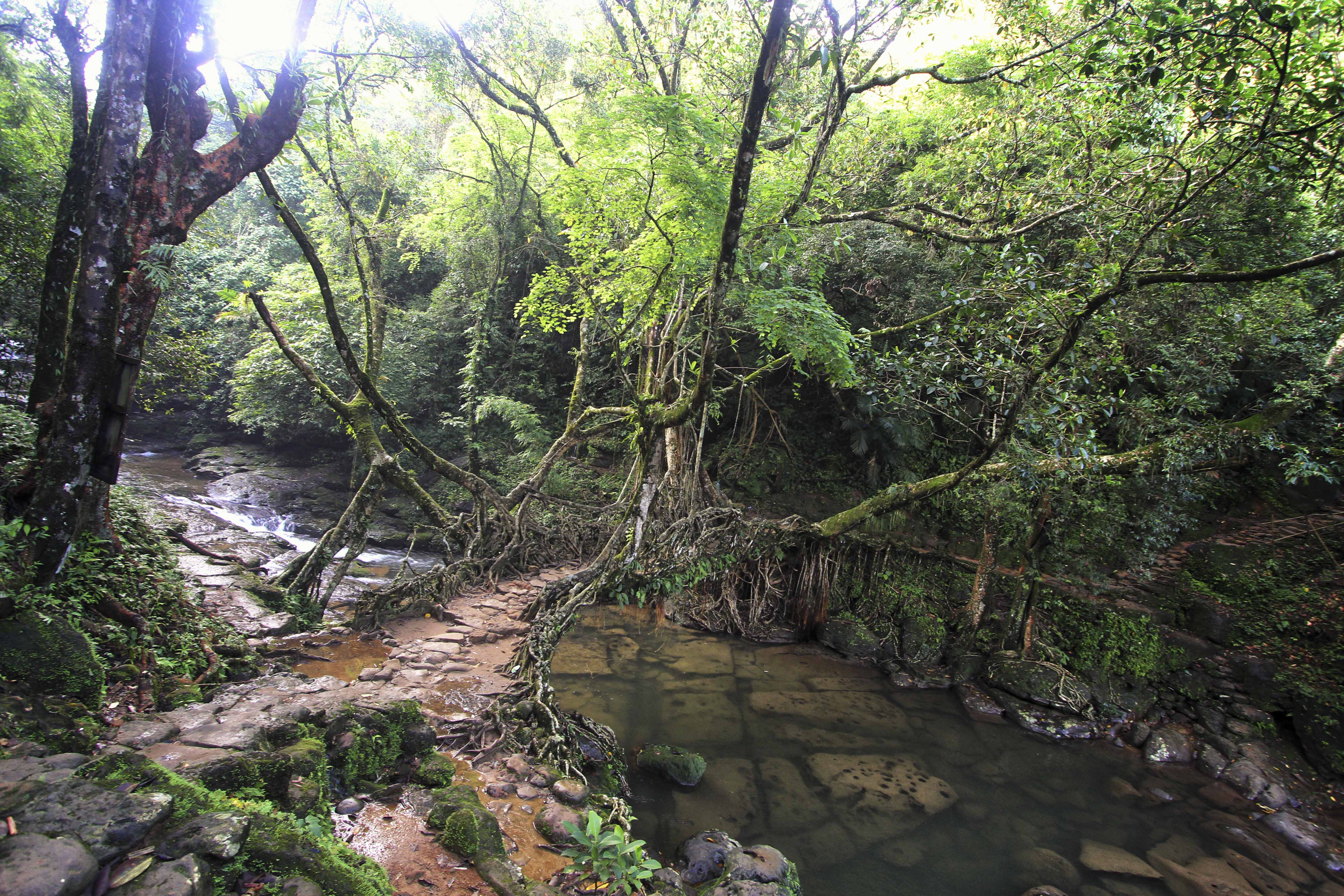
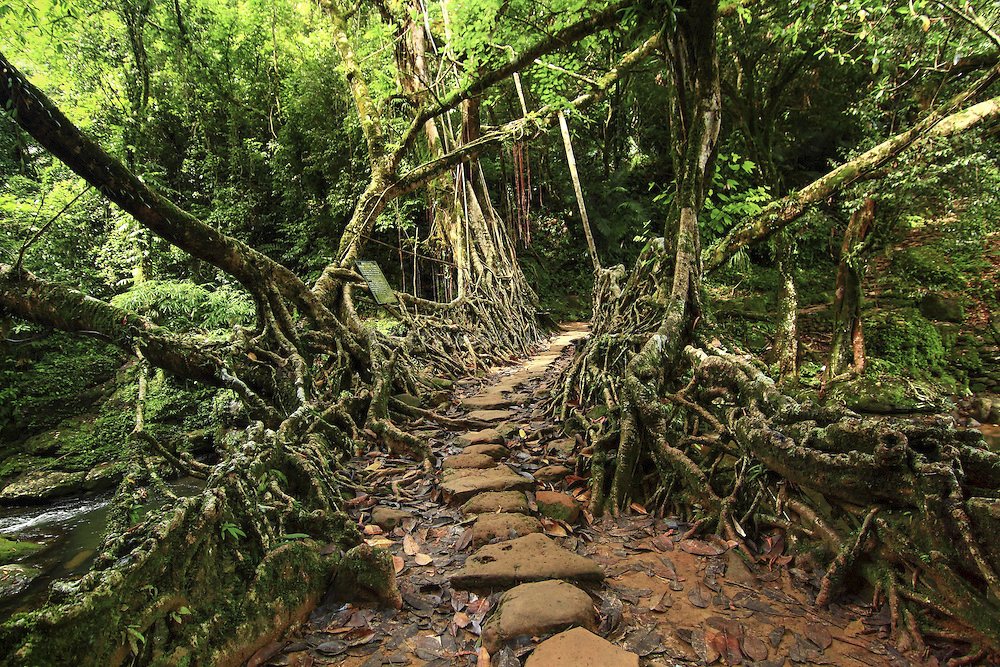
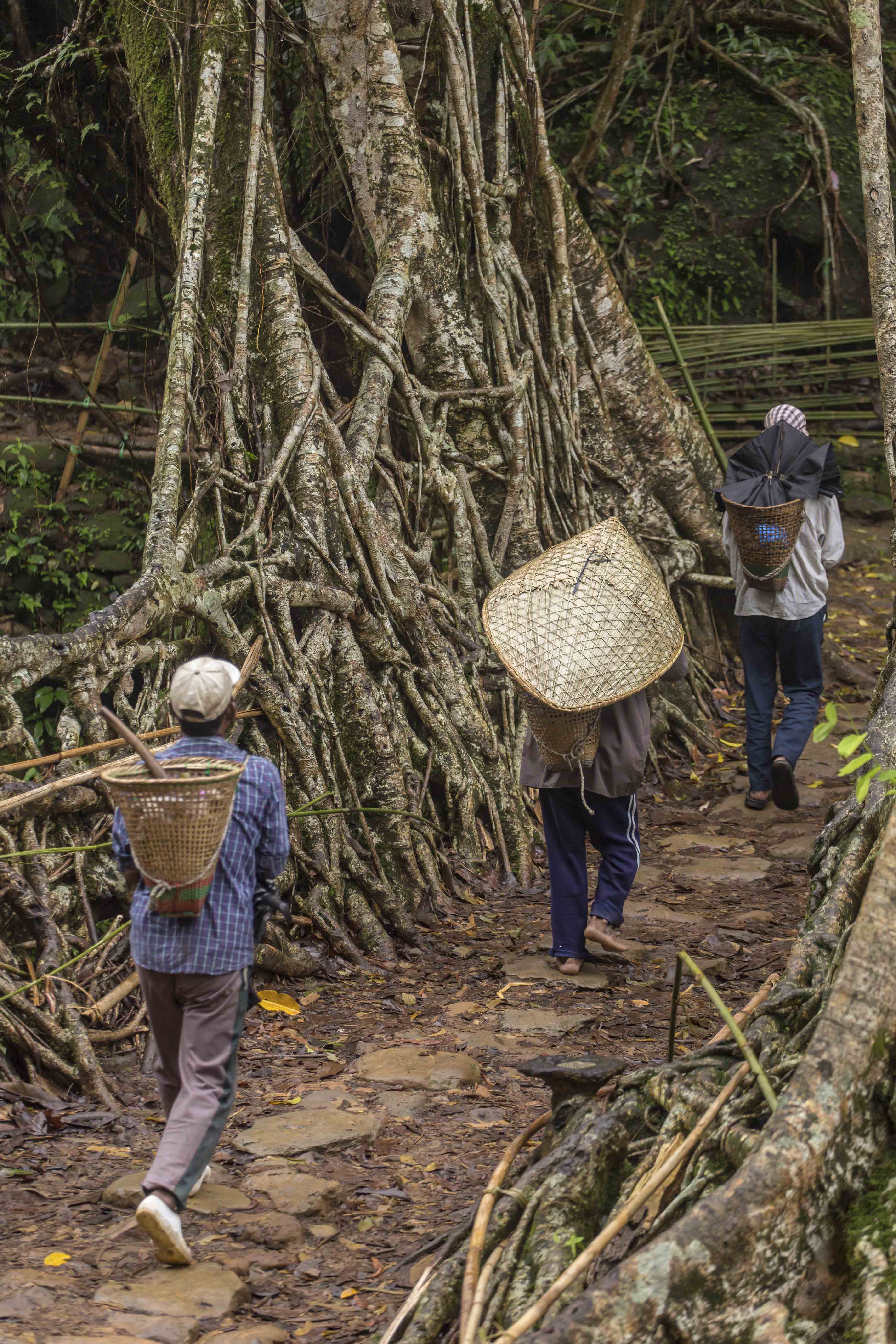
They fortify over decades as the trees merge through a process of fusion known as “anastomosis,” Prasenjeet Yadav, a molecular biologist-turned-photographer, wrote for NPR.
Many living root bridges have been engineered to bridge gaps over steep crevices and raging monsoon rivers running through subtropical forests at high elevations, a 2019 study published in Scientific Reports explains. While new root growth can be manipulated to strengthen the structure, bridges can decay if left unattended. A mature bridge under ideal conditions can last hundreds of years.
They are habitually used by villagers transporting goods to sell at market, or coming to and from their homes to tend farmland, since the main occupations of the region are weaving, farming, fishing, and fermenting rice beer.
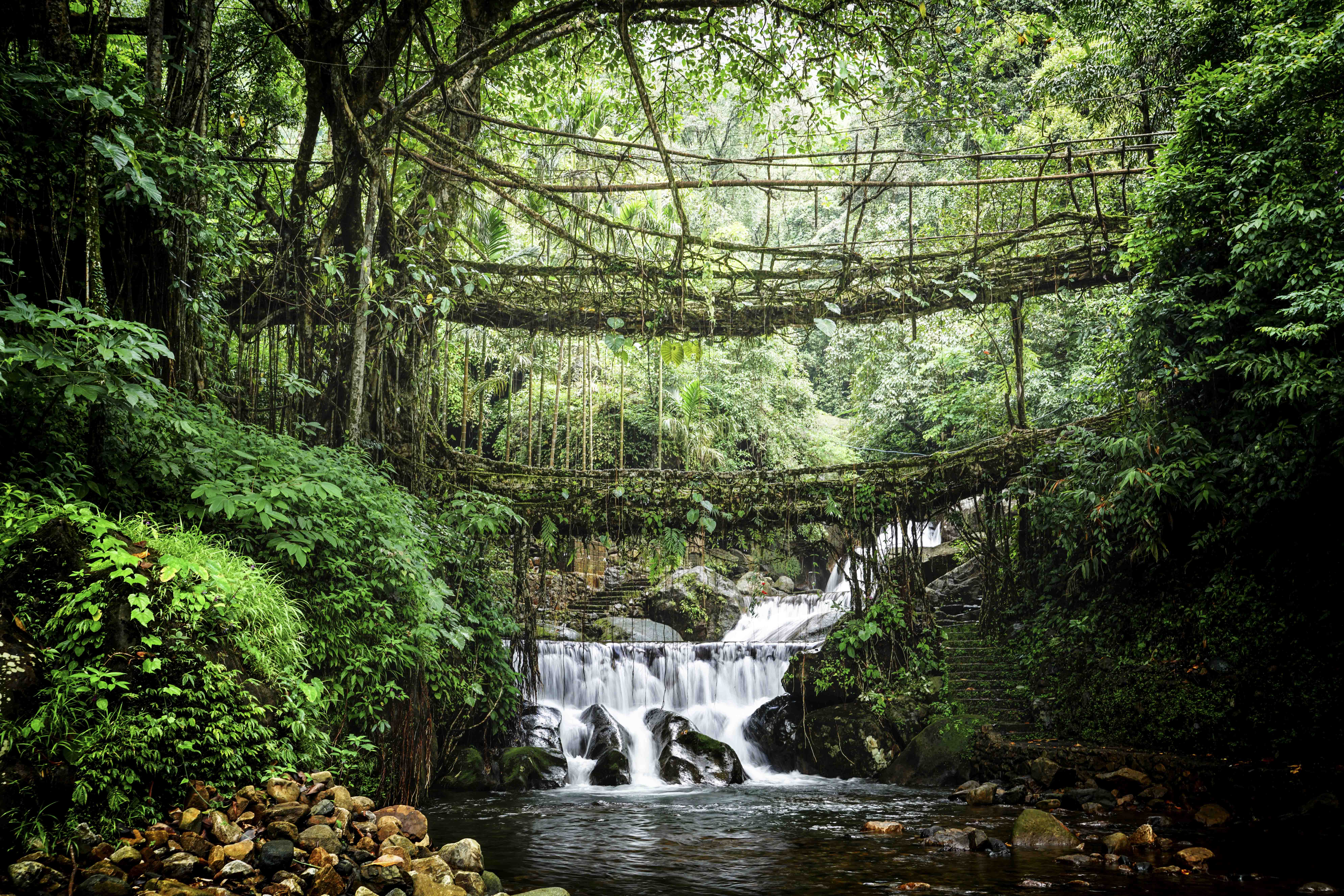
Watch the video:Play Video
- (Courtesy of Meghalaya Tourism)
Travel blogger Even Fewer Goats, who visited remotest Meghalaya for a month-long trek in 2015, said: “I think it is not an exaggeration to say that they are among the world’s most unusual manmade structures. There is simply no other form of functional architecture where the structure itself is alive. Nothing else built by man is more sturdy after 600 years than after 60.”
Sometimes, wood or bamboo scaffolds or palm trunks are used to train the tree roots. The scaffolding is replaced as the bridge matures. Living root bridges can also be engineered by guiding the roots of young rubber fig trees over preexisting steel wire suspension bridges. The composition of the bridge will gradually change as the underlying structure decays and the tree roots mature and fortify.
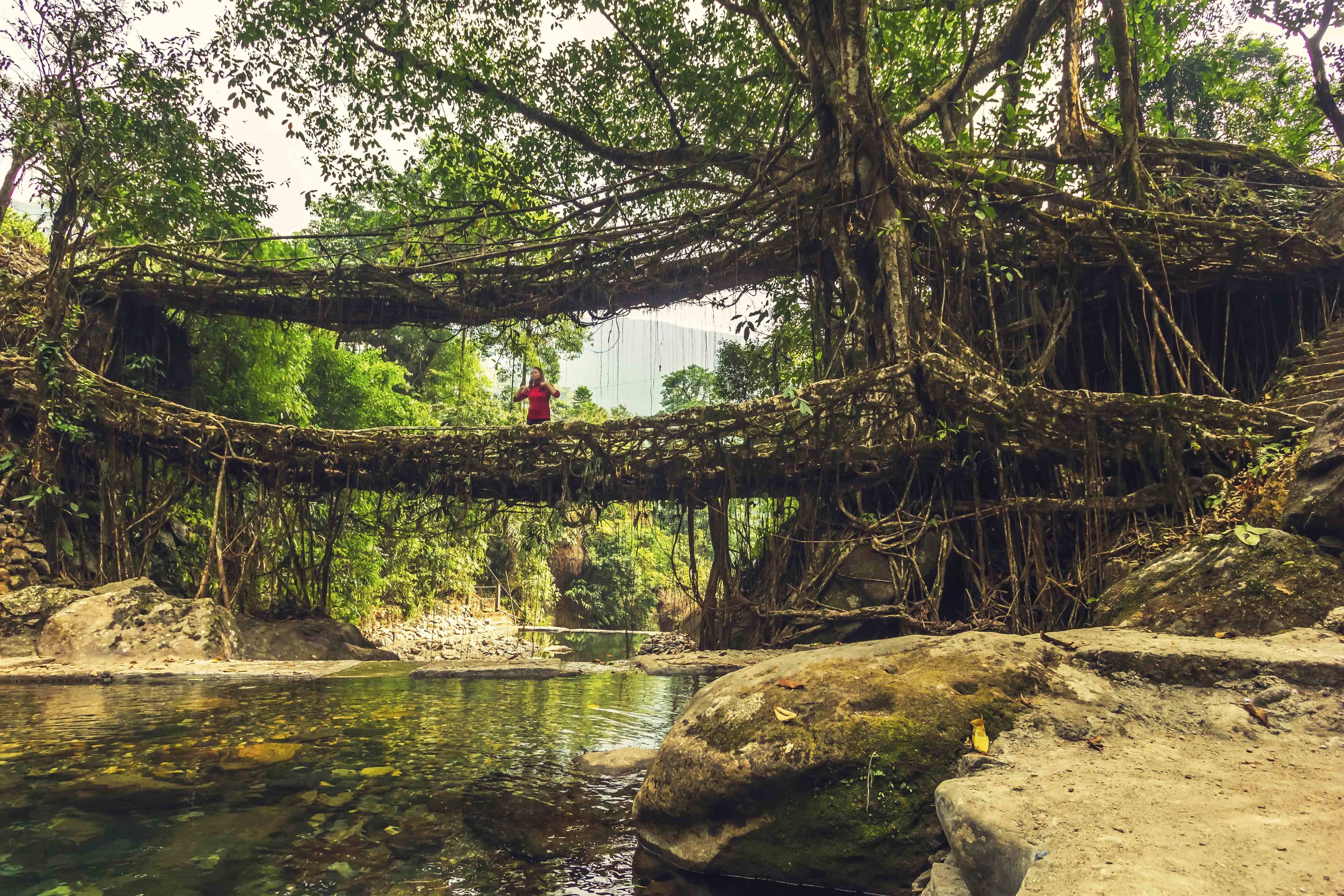

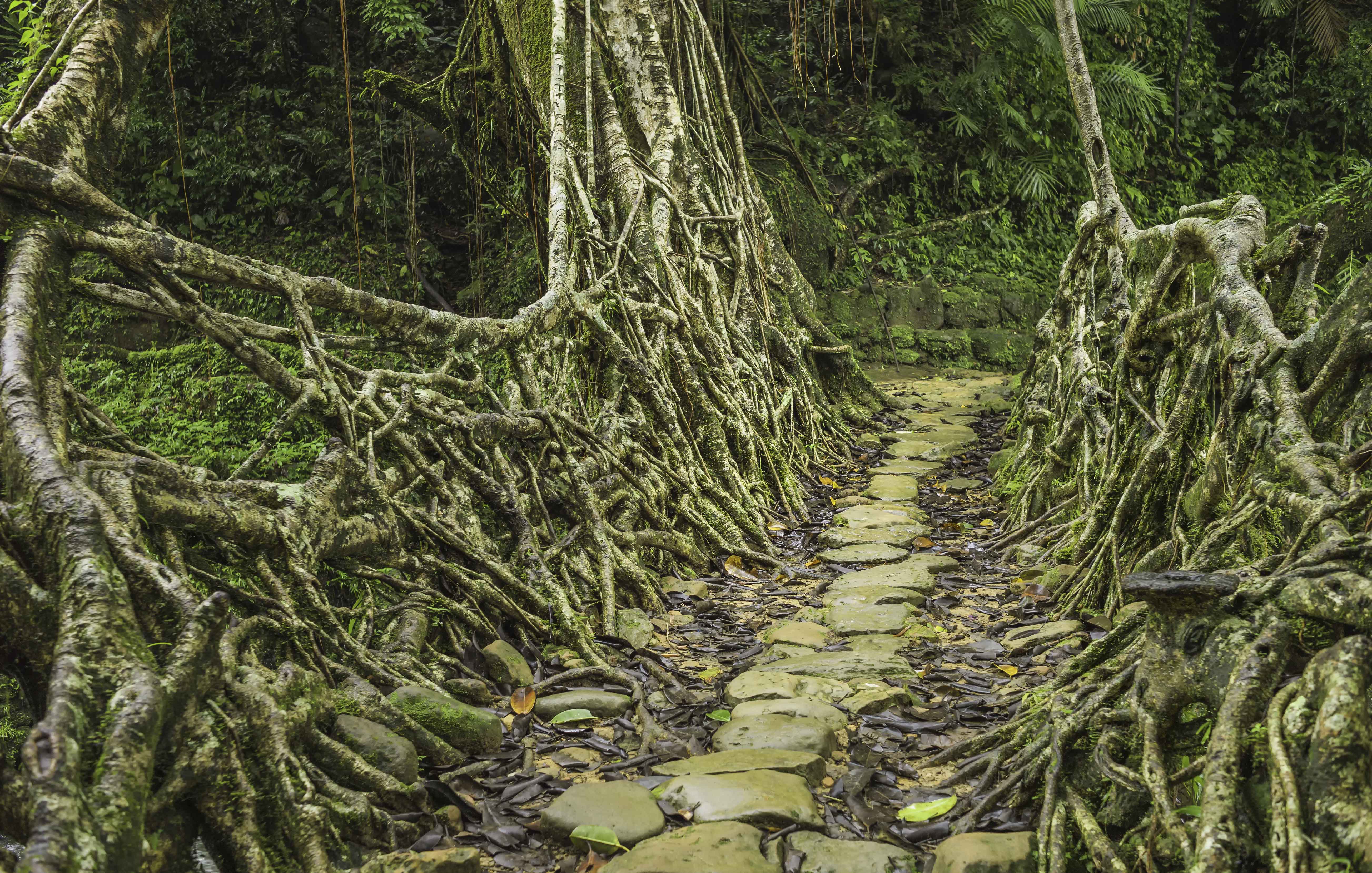
However, many living root bridges are crafted by hand without the aid of scaffolding, The Living Root Bridge Project explains, and the construction and maintenance of a new bridge is considered a community endeavor. Some of the people involved in the building of a new bridge may never get to see it reach maturity. Instead, the work is considered a gift to the next generation.
Studies have estimated that there are between 75 and 100 known living root bridges in existence. One of the longest, Rangthylliang Bridge near the small Khasi town of Pynursla, India, measures over 164 feet (50 meters) in length. Examples of living root bridges have also been found on the islands of Sumatra and Java in Indonesia.
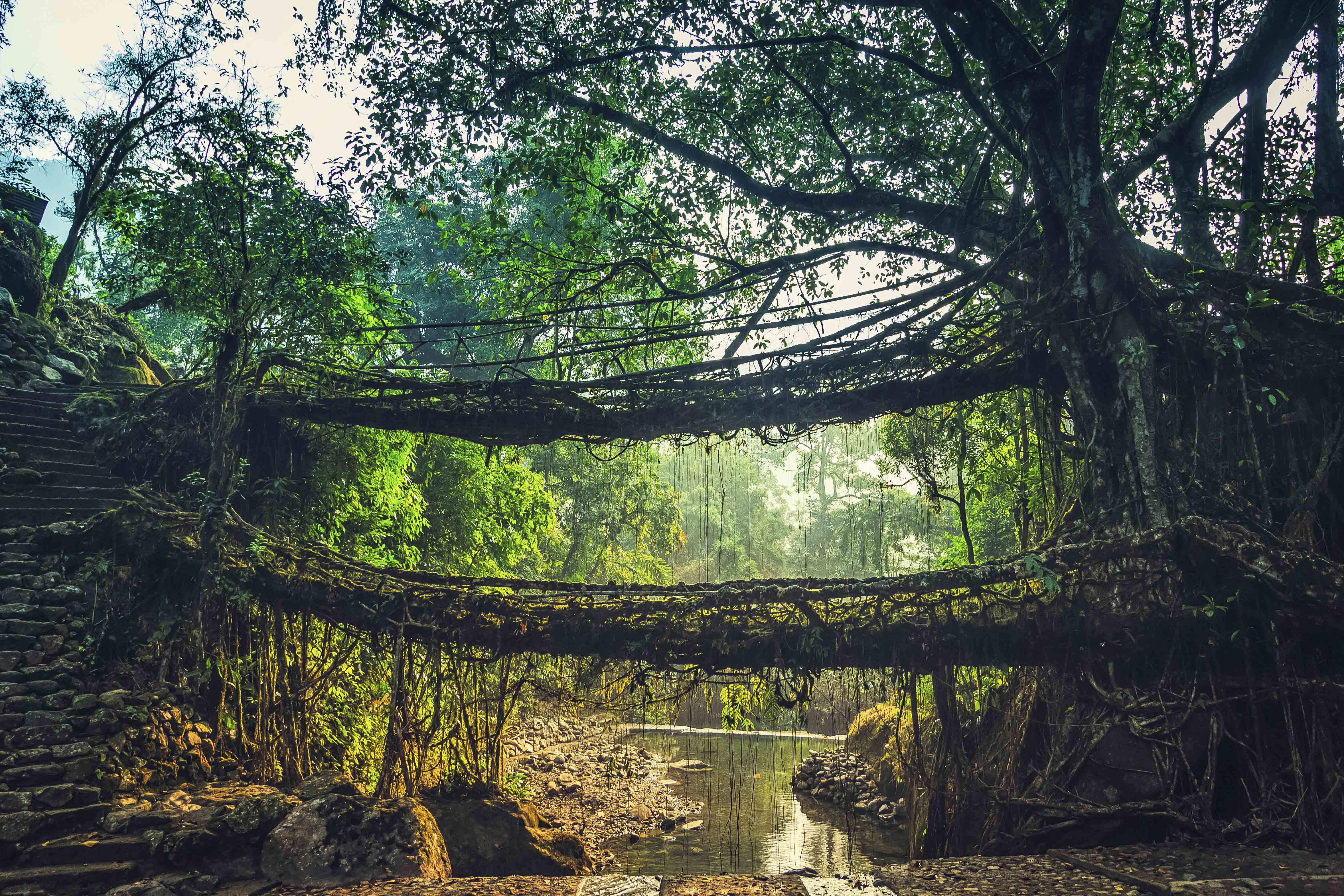

The allure of these bridges in the tourism industry is “a double-edged sword,” wrote Yadav; while visitors bring income to the region, the bridges were not built to support hundreds of pairs of feet in high season.
“Some bridges have begun to show signs of physical damage. … Fortunately, many locals are increasingly aware of these threats and are working toward developing a more sustainable model of tourism,” the photographer explained.
Incredible feats of human and natural engineering, living root bridges are currently listed on the “tentative” World Heritage List of UNESCO.
Source: https://www.theepochtimes.com/man-made-living-bridges-are-grown-to-stand-for-centuries-without-nuts-or-bolts-video_5274482.html?utm_source=News&src_src=News&utm_campaign=breaking-2023-07-06-2&src_cmp=breaking-2023-07-06-2&utm_medium=email
Link to Meghalaya Tourism Official : https://www.youtube.com/@meghtourism